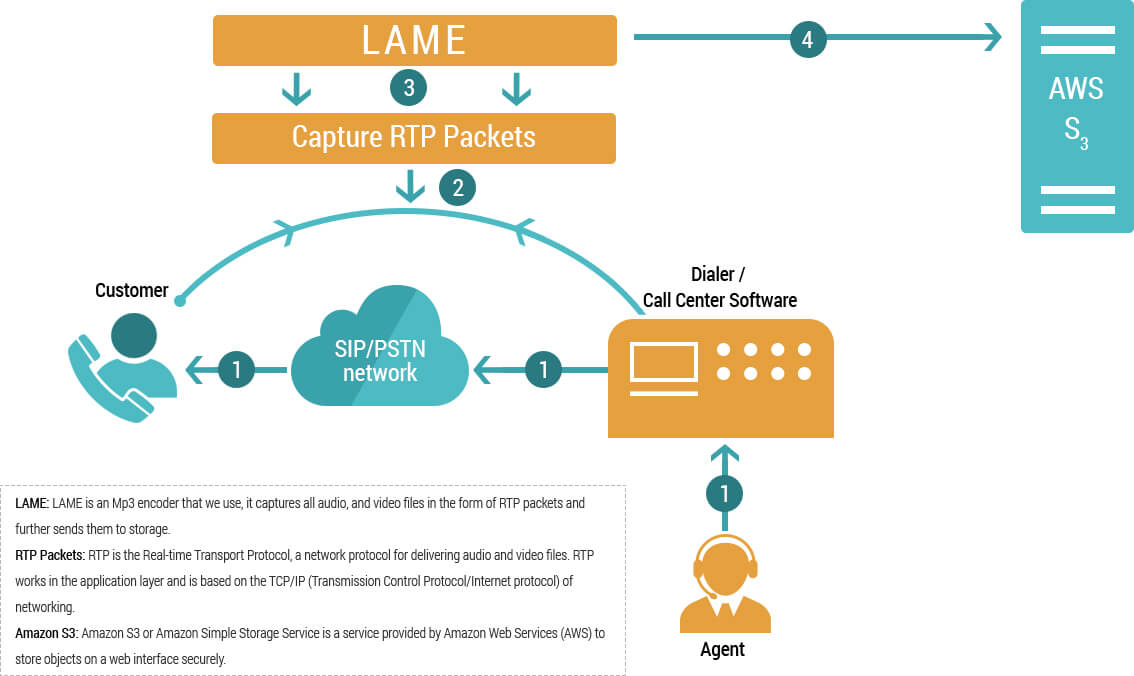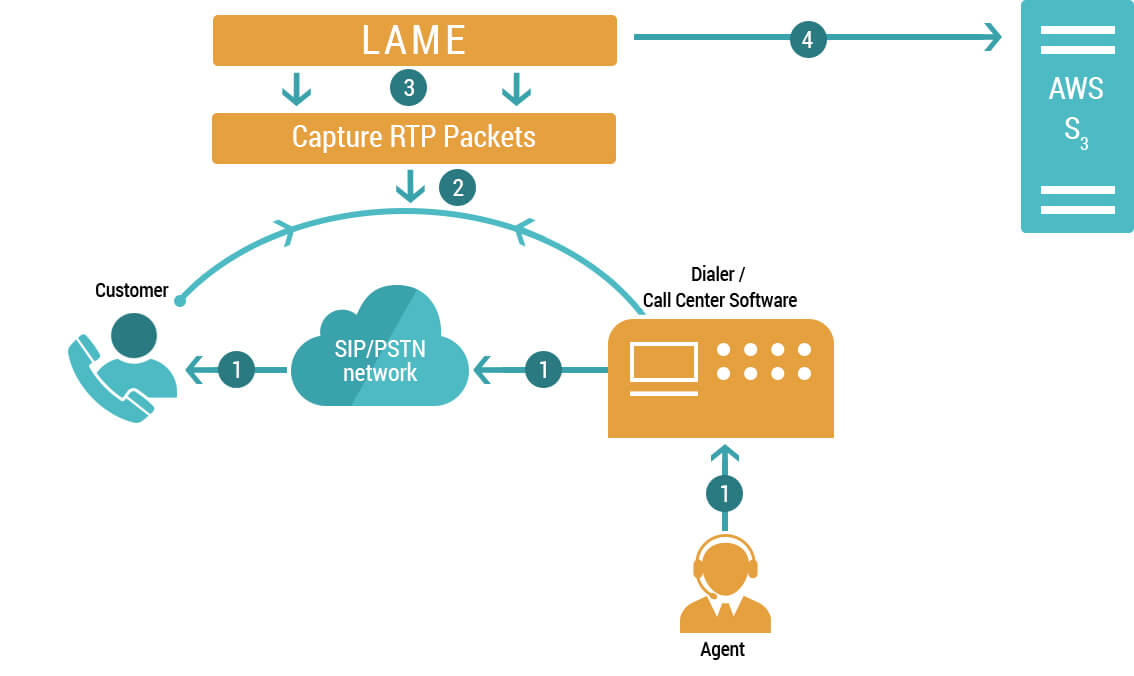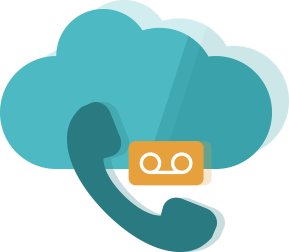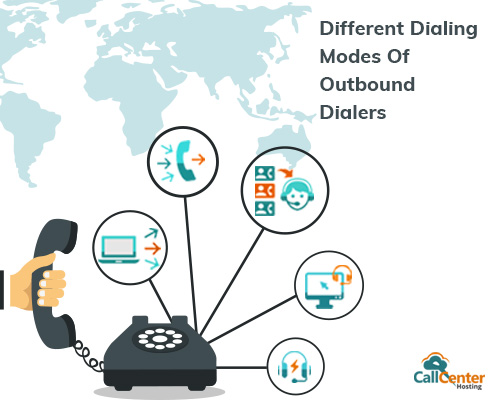What Is Call Recording?
Call Recording is the process of recording the calls made over either PSTN (Public Switched Telephone Network) or VoIP (Voice Over Internet Protocol) and saving them in a digital audio format. Recording business calls can be very productive as they provide insights into the previous calls and help you improve and analyze your calling processes with all the essential changes.
Call recording is also instrumental in instances where training and reviewing is a significant aspect of the business because by listening to the previous recordings, you can figure out the grey areas that need improvement.
Call recording is also instrumental in instances where training and reviewing is a significant aspect of the business because by listening to the previous recordings, you can figure out the grey areas that need improvement.
Benefits of Call Recording
Revisit the Missed or Forgotten Details
You can revisit or recall the details you might have missed during the first interaction by listening to the recorded calls and analyzing them.
Enhance Agent Skills and Quality
Simplify your agent training process by recording calls and making it easier for the new agents to learn from examples. Also, monitor and ensure the quality of calls by overseeing the recorded calls regularly.
Digitally Record Every Conversation
Worried you will forget some detail if you don’t note it down. Recorded calls give you the benefit to revisit your previous calls and recall the essential information. It also helps in keeping a formal record for any situation that might occur.
Customize Service with Easy Tracking
You can track the information that the customer has given during the call and use it for a better understanding of your customers to tailor your services accordingly.
Maintain a Solidary Proof of Every Conversation
Compliance rules might require you to give some physical proof in matters of conflict. Call recording comes in as an easy option for such situations.
Integrate All Calls with your CRM
Integrate the call recordings to your CRM to better understand the customer and their journey. This integration helps in customizing and personalizing any subsequent conversations that the customer might want to have.
Develop Personalized Products by Isolating Calls
You can isolate different parts of a call from the recorded version, use it to your advantage and design better or customized products/services according to the customer needs.
How Call Recording Works?
Calls can be recorded using various methods. They can be recorded by individually activating the record button before or during the call or by automating and recording every call that takes place. However, recording calls is only legal when both the parties involved are aware of the recording process. So, it’s always advisable to either inform your customer of the recording process beforehand or ask for permission while on the call and then start recording it. There are majorly two kinds of recordings which determine where the phone will be tapped or at which location will the calls be recorded. These two kinds include trunk side recording and the extension side recording.
Trunk Side Recording:
Trunk Side Recording: Trunk side recording is when the recording is done on the incoming lines from your phone providers (Example: AT&T). The recorder here is placed between your PBX and the outside telephone lines. This kind of system is used for capturing both inbound and outbound calls. If we talk in layman terms, trunk side recording is when all the recording is done in the same sequence as the customer speaks.
Extension Side Recording:
Extension Side Recording: Extension side recording is done on the internal side of your lines, that is, after your PBX. This configuration is primarily helpful when you want to record or tap certain specific extensions or departments. Extension side recording, unlike trunk side also records the calls made from one extension to the other, that is, internal calls.


LAME: LAME is an Mp3 encoder that we use, it captures all audio, and video files in the form of RTP packets and further sends them to storage.
RTP Packets: RTP is the Real-time Transport Protocol, a network protocol for delivering audio and video files. RTP works in the application layer and is based on the TCP/IP (Transmission Control Protocol/Internet protocol) of networking.
Amazon S3: Amazon S3 or Amazon Simple Storage Service is a service provided by Amazon Web Services (AWS) to store objects on a web interface securely.
Call Recording In Different Industries
Government
Record every conversation and secure your government from any unwanted dispute or threat. Also, detect and trash the inappropriate or malicious calls.
Legal
Tracking phone calls can be advantageous in the legal department as lawyers need to leverage every conversation. Minimize the scope of mistakes by recording your calls & keeping track of them.
Transportation
Call recording can prove to be useful in the transportation industry as there can be certain details that are missed or factors that need revalidation.
Financial Institutions
Call recording is significant here as it leaves a trail of evidence with no room for fraud. The finance industry is a crucial industry and should not be a victim of any fraudulent or unreliable activities.
Telecommunications
The telecommunication industry needs to make calls almost all the time. Record your calls and keep an inevitable scope for any further evaluation or consideration.
Information Technology
The cycle of conversations in the IT industry is long. So, keep your long conversations recorded and present for any future consideration or conflict that might occur.











